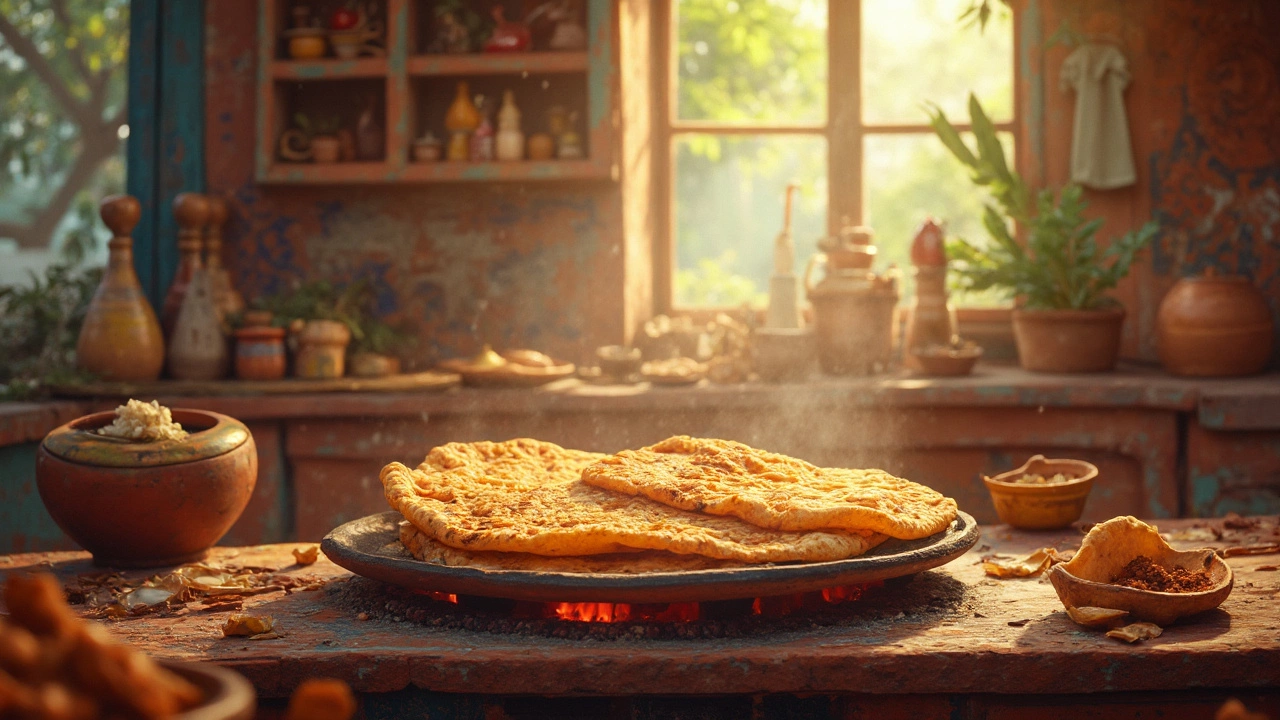Roti Calories Comparison
When talking about roti calories comparison, the process of measuring and contrasting the energy values of different Indian flatbreads. Also known as roti calorie analysis, it helps home cooks decide which version fits their diet. The central idea links the type of Roti, a thin, unleavened flatbread made from whole‑wheat flour with the Calorie Count, the amount of energy provided by a serving, usually expressed in kilocalories and the Cooking Technique, methods like adding oil, using baking soda, or adjusting heat that change texture and nutrition. Knowing these connections lets you pick a softer, lighter roti without guessing.
What changes the calorie count?
First, the flour itself matters. Whole‑wheat atta has about 340 kcal per 100 g, while a mix with refined flour drops a few points but can affect texture. Adding fat – a splash of oil, a dab of butter, or a pinch of ghee – spikes the energy by roughly 40–50 kcal per teaspoon. That’s why a roti cooked with a drizzle of oil feels richer and counts higher than a dry, puffed one. Second, leavening agents like baking soda or baking powder don’t add calories, but they create air pockets, making the roti larger and effectively lowering calories per bite. Third, thickness and size are direct multipliers: a 6‑inch roti weighs about 50 g, while a 9‑inch version can reach 80 g, raising the total kcal proportionally.
Beyond ingredients, technique plays a big role. When you roll the dough thin and cook quickly on high heat, the roti puffs up, trapping steam and needing less oil. Over‑cooking on low heat makes it dry and hard, prompting cooks to add extra butter to soften it – which adds calories you might not expect. Using a non‑stick tawa reduces the need for oil, keeping the calorie count lower. So, the same dough can yield a 120 kcal soft roti or a 90 kcal puffed one depending on how you handle the heat and surface.
Finally, portion awareness ties everything together. Even the healthiest‑looking roti can tip your daily budget if you stack two or three on one plate. One solid rule: count the weight of the cooked roti, not the raw dough, because water loss during cooking reduces weight by about 15 %. By measuring cooked weight, you can accurately calculate energy using the formula: (kcal per 100 g of raw dough) × (cooked weight ÷ 100). With these metrics, the calorie comparison becomes a clear, actionable guide rather than a vague guess.
Below you’ll find a curated set of articles that dive deeper into each factor – from why roti doesn’t puff, to the impact of baking soda, oil timing, and even how to gauge portion size. Use them to fine‑tune your own roti routine and keep your meals both tasty and on‑track.

Roti Calories: Whole Wheat vs. Refined Flour Explained
Choosing between whole wheat and refined flour rotis can be a daily dilemma for many. While they look similar, the calorie content and nutritional benefits differ quite a bit. We'll explore how many calories are in one roti, analyze the calories in one roti with sabzi, and offer tips for making healthier choices. Discover practical insights to make informed dietary decisions without sacrificing your favorite foods.